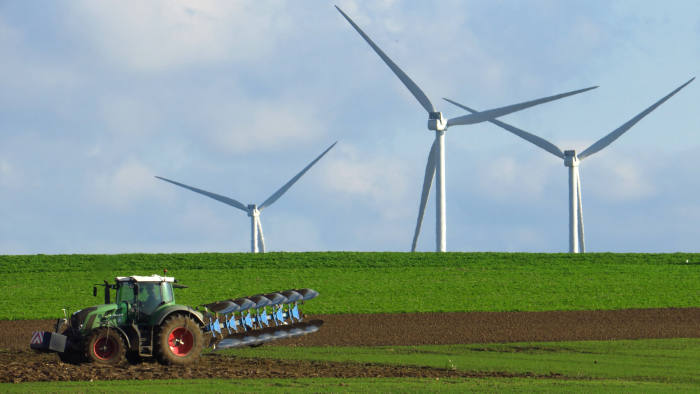
The plan underlines the environmental ambitions of the next European Commission, the EU’s executive, which is expected to be voted into office on Wednesday for a five-year term.
But it is likely to stoke a battle with regulators at the European Central Bank, where officials have warned against tampering with rules designed to make bank lending less risky.
Valdis Dombrovskis, a vice-president of the commission, told the Financial Times that he wanted to examine a cut to the capital charges imposed on banks’ climate-friendly lending. He said the initiative would encourage banks to finance energy-efficient homes, zero-emissions transport and other green investment by reducing the amount of capital they would have to set aside against such lending.
A “green supporting factor” for bank lending is “something we need to explore”, Mr Dombrovskis said in an interview.
Ursula von der Leyen, the incoming commission president, is prioritising plans to curb EU carbon emissions as part of a so-called green new deal. The European Parliament is due to vote this week on new climate targets.
Mr Dombrovskis, who heads Brussels’ policymaking on financial regulation, will have expanded responsibilities in the incoming commission, which will start work on December 1. These include being in charge of plans to mobilise €1tn of climate-related investment over the next decade.
His plan for capital charges — which was briefly floated by Brussels two years ago — faces opposition from banking supervisors. Andrea Enria, the head of the ECB’s bank supervision arm, insisted last week that financial institutions’ capital requirements should be based on the level of risk they take and should not be altered to pursue other objectives.
“Our mandate is to make banks safer and sounder,” Mr Enria said. Mr Dombrovskis acknowledged the resistance to the proposal, noting that “green does not mean risk-free”.
His plan would draw on Brussels’ experience after the 2008 financial crisis, when it tried to drive bank lending to small and medium-sized businesses through similarly favourable capital treatment.
Under those EU rules, capital requirements for such business loans are nearly 25 per cent below what they otherwise would be. Mr Dombrovskis suggested green capital relief could be similar in scale.
Brussels needed to look at “the ways to practically facilitate, to practically support this green investment”, he said.
Ms von der Leyen is assembling other green measures as the EU pushes for carbon neutrality by the middle of the century. Mr Dombrovskis said that among the priorities was a reform of the emissions trading scheme, which sets a carbon price in the EU. The changes could expand the scheme to shipping and widen its coverage of aviation.
“If we want to move towards carbon neutrality, we will have to look also at sectors like aviation and maritime,” he said. “It is difficult to continue to exempt energy-intensive sectors.”
The commission is also at the early stages of discussing a so-called carbon border adjustment that would aim to prevent tighter EU emissions rules from disadvantaging domestic industry compared with overseas competitors, he said. This would entail applying the EU’s carbon price to certain categories of imports, starting with a narrow range of industries and then potentially broadening out.
Brussels is looking to “adjust for the carbon footprint of imported products and apply this carbon price”, he said.